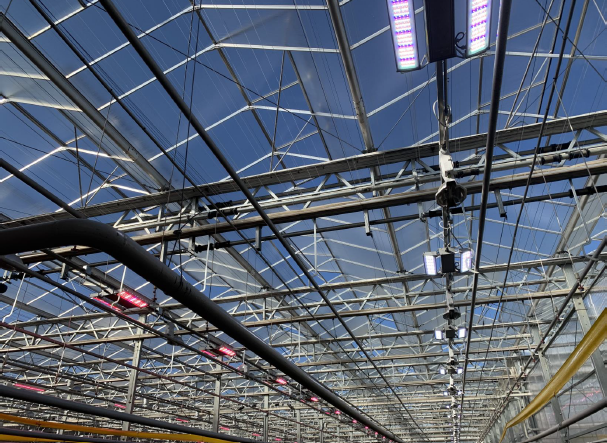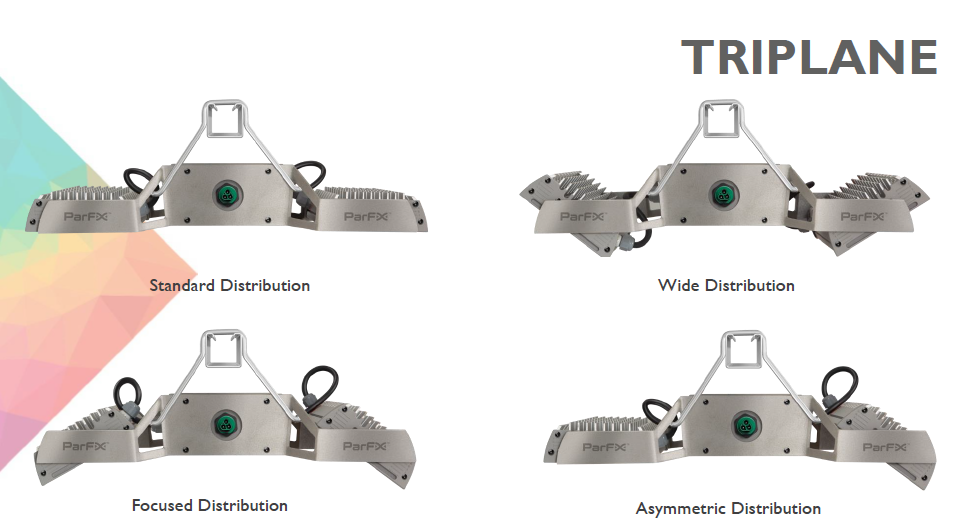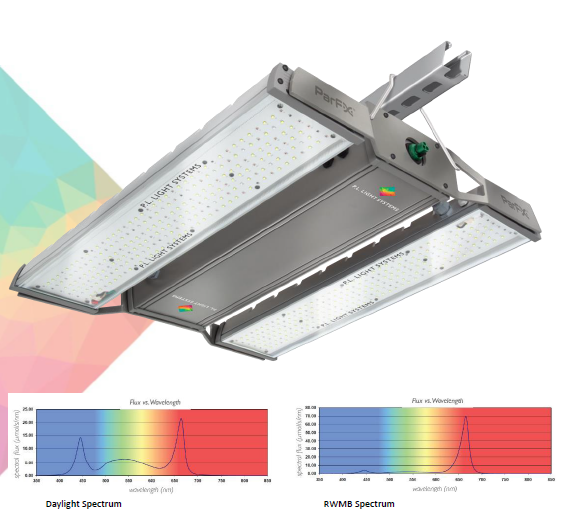
New and innovative design developments regularly occur in LED technology for horticultural lighting. The TriPlane fixture from P. L. Light Systems is one such development. Typically, distribution of lights is heavily influenced by both optics (glass coverings or lenses for bulbs) and reflectors (metallic enclosures to shape and direct light output). Metal halide (MH) and high-pressure sodium (HPS) bulbs, without a reflector, would emit light in all directions, with much of that light “wasted” in directions away from crops. LED fixtures have historically not used reflectors due to their strong inherent directionality.
The TriPlane fixture has taken advantage of this design consideration by mounting two separate LED arrays to field-adjustable panels. This unique “winged” design allows growers to adjust to the angle of each panel as necessary upon installation. The adjustability of the TriPlane allows the same fixture to be used in multiple scenarios with minimal tweaking. For HPS and MH, this would be accomplished by having a completely different reflector hood installed on lights in edge areas versus interior crop areas.

The TriPlane has four suggested configurations to address the vast majority of lighting set ups: Standard, wide, focused, and asymmetric distribution. With the standard configuration, both LED wings are pointed straight down, for an even distribution directly underneath the light. In the focused configuration, both wings are angled inward to focus light on a smaller area. The asymmetric distribution, with only one wing angled inward and the other in the standard position, targets edge lighting positions, cutting down on light spilled outside of the crop canopy. Finally, the wide distribution configuration can be mounted over walkways to direct light toward crops rather than empty aisle floors.

Light spectrum also factors into lighting choices and is highly dependent on application. The TriPlane offers two spectrum options: Daylight spectrum and RWMB (red-white-medium-blue). The daylight spectrum is best utilized in a sole-source scenario, where no ambient light is available, such as in warehouses. Broad spectrum light is more desirable in these scenarios to cut down on unwanted morphological or physiological spectral effects. In the greenhouse, where natural, ambient light is available, the RWMB spectrum can be used. This spectrum has the advantage of improving electrical efficiency while providing photons in narrower wavebands.
To find out how the TriPlane fixture from PL Lights might fit into your grow operation, contact your Griffin sales rep today!